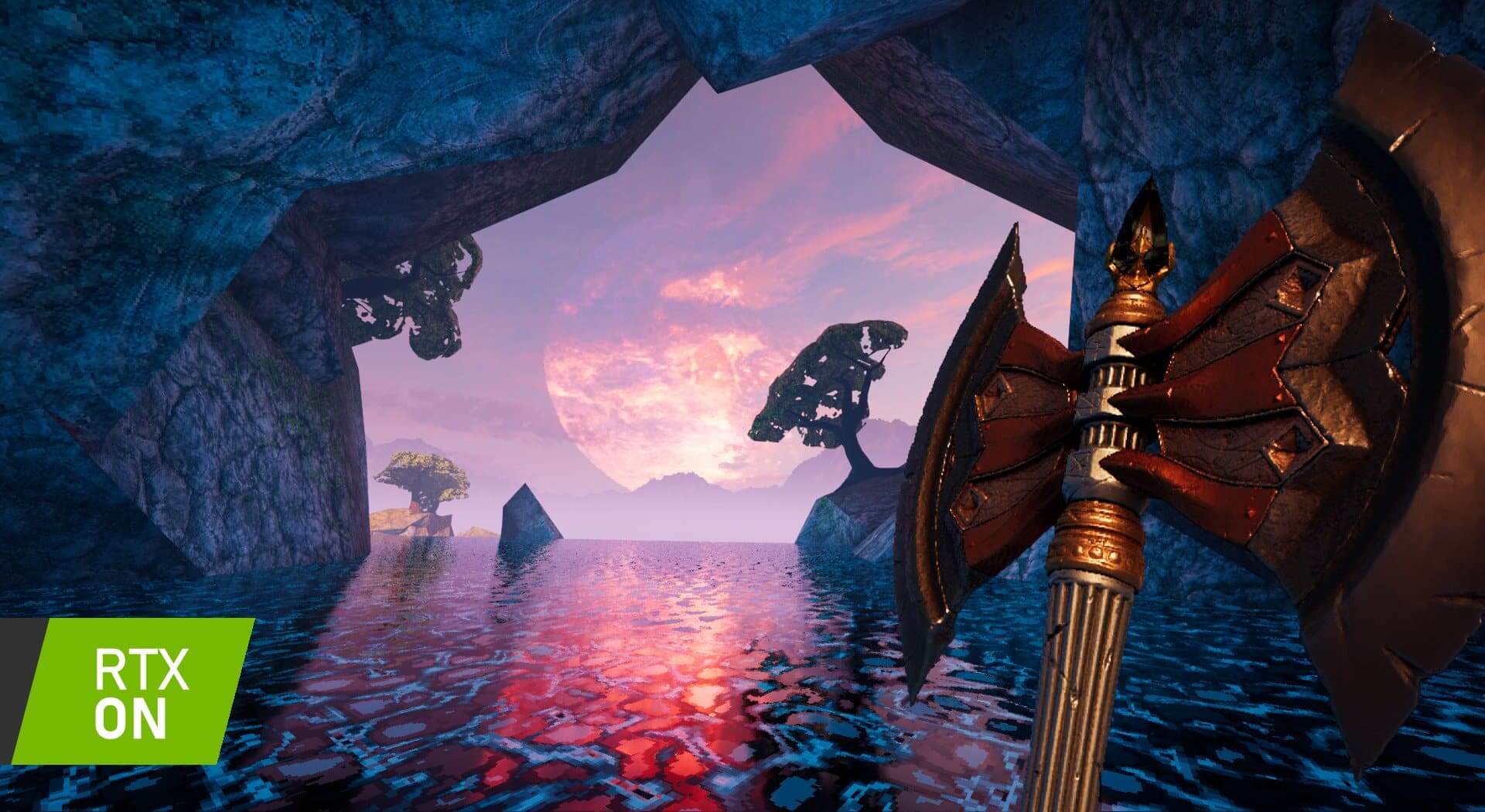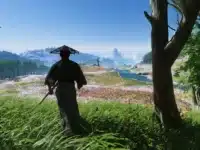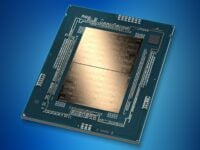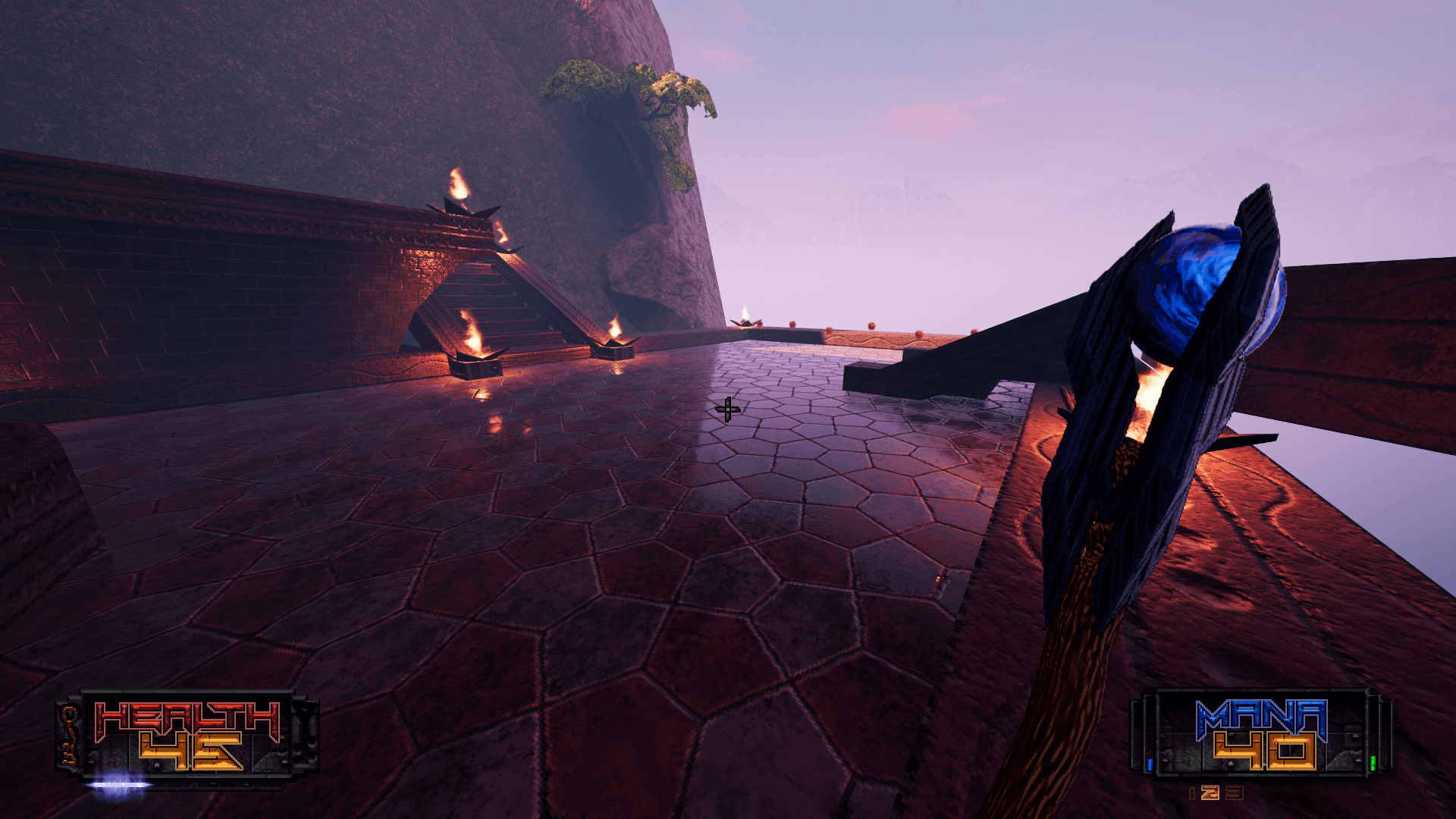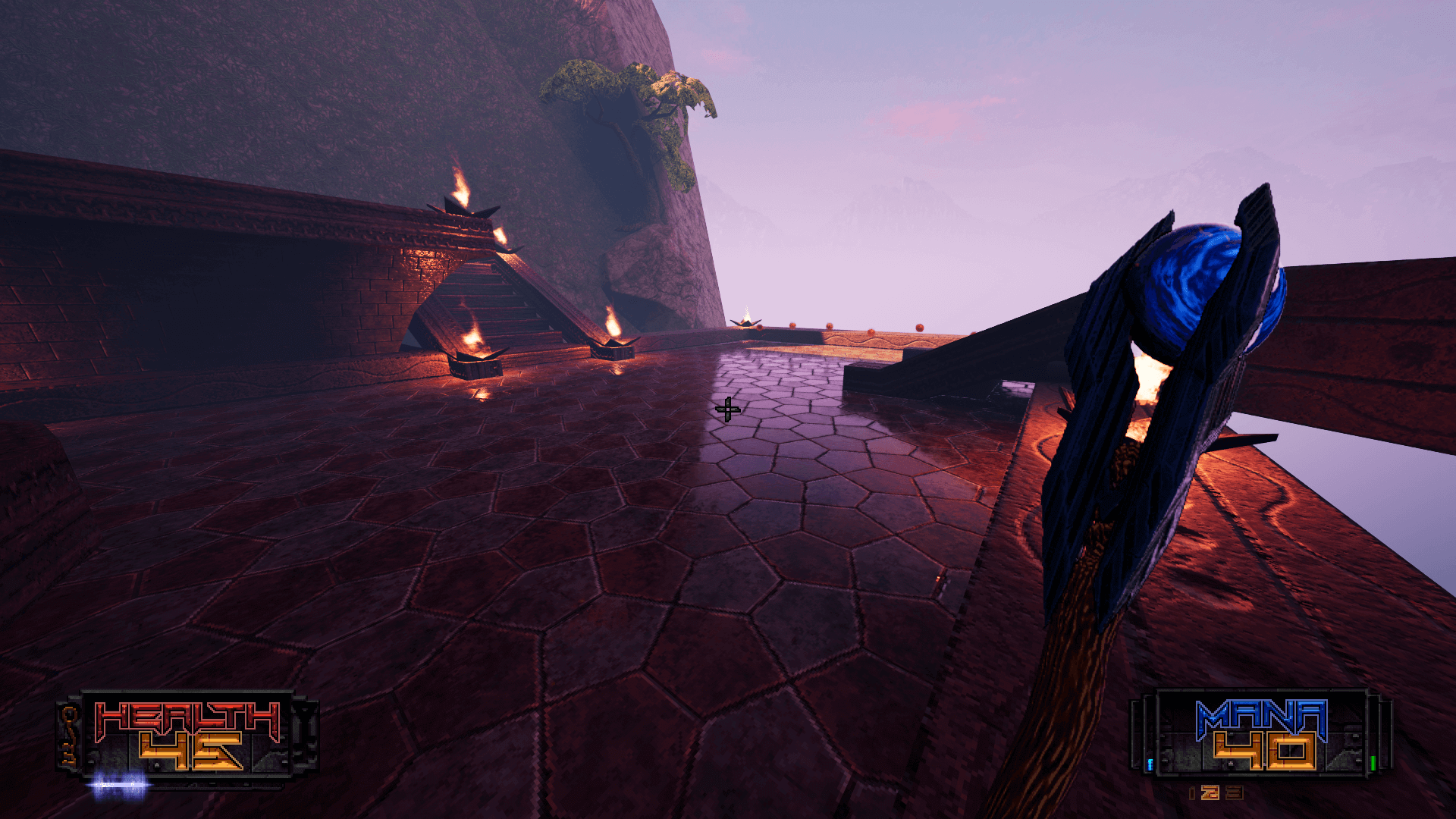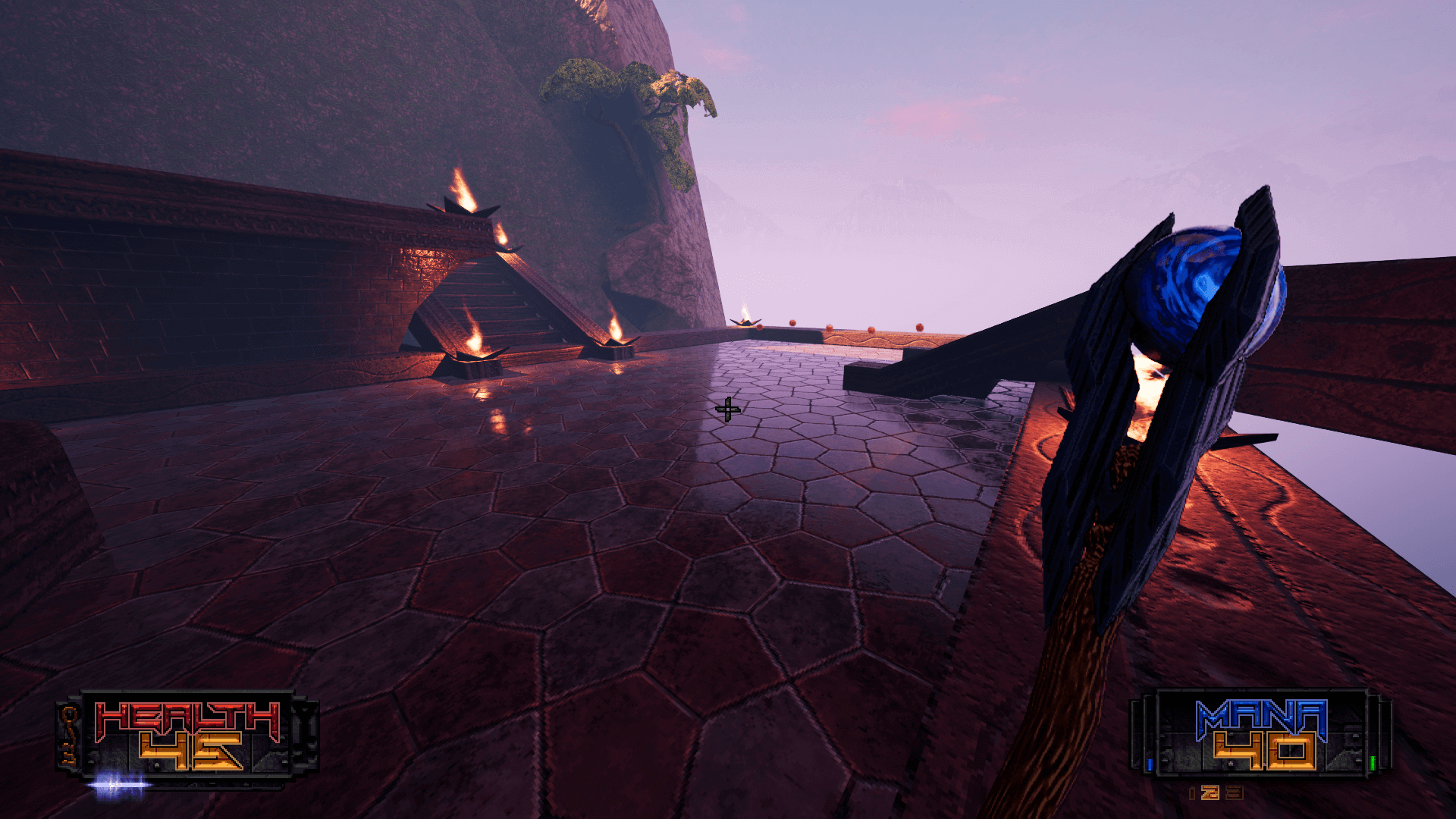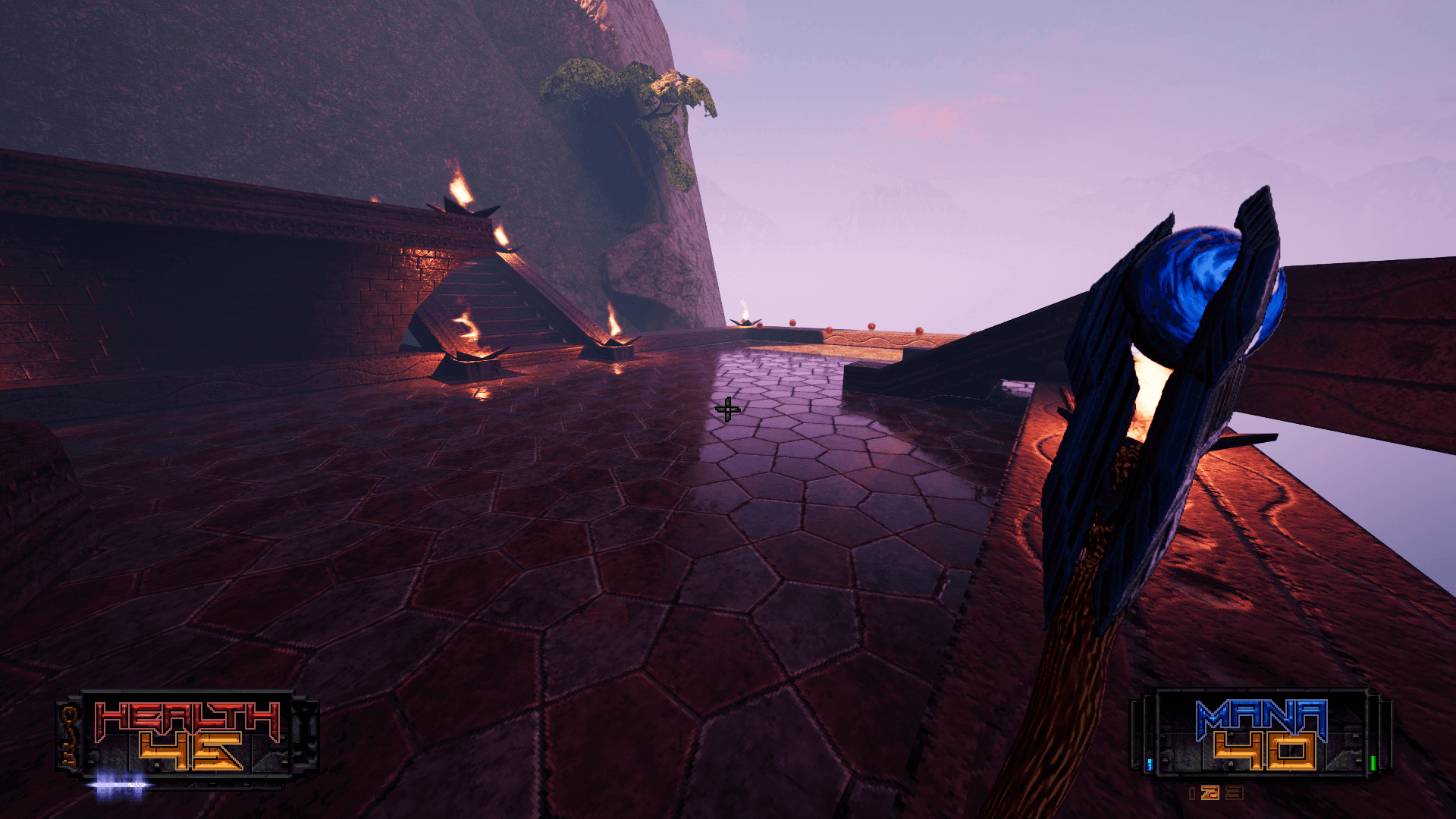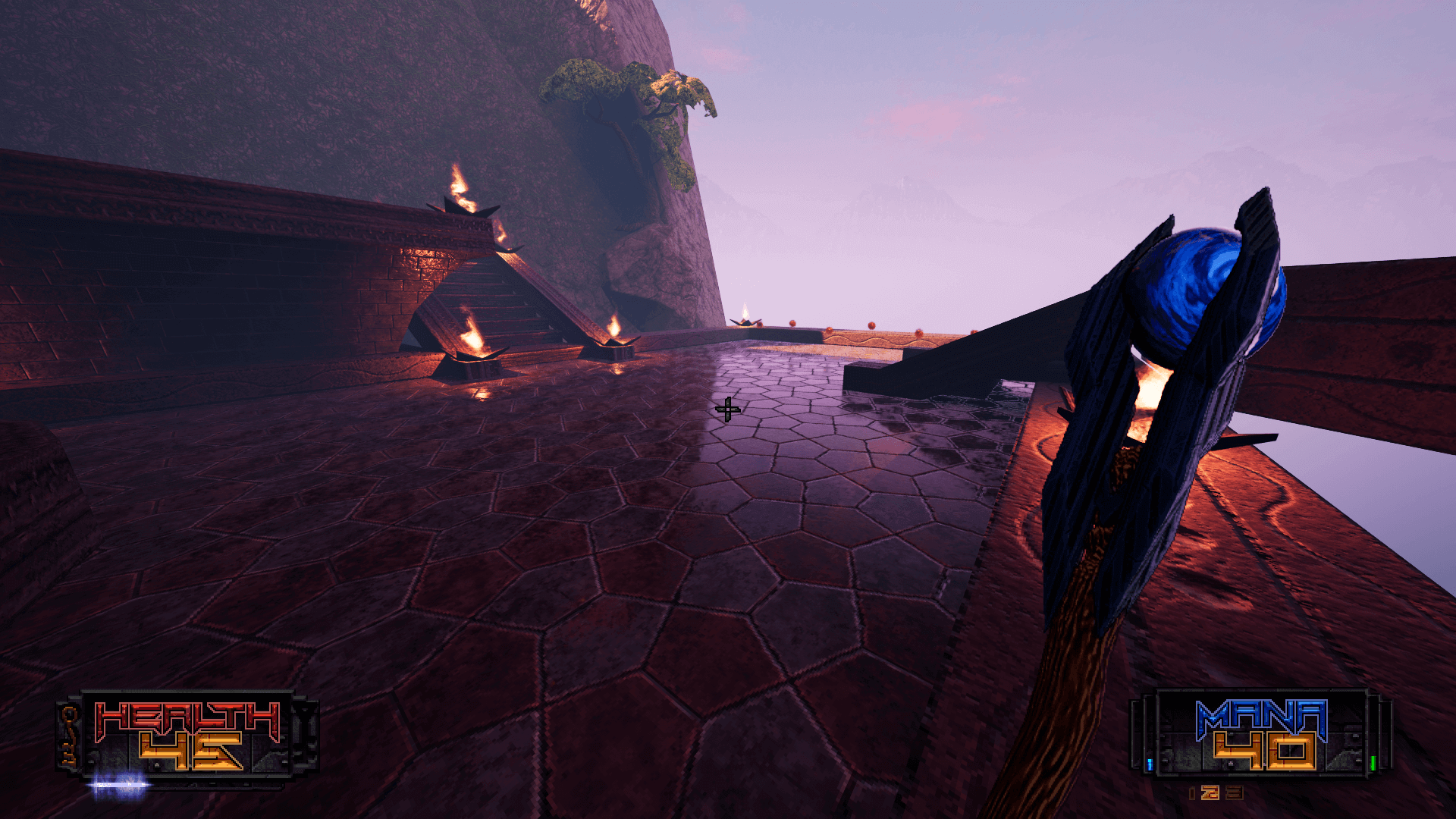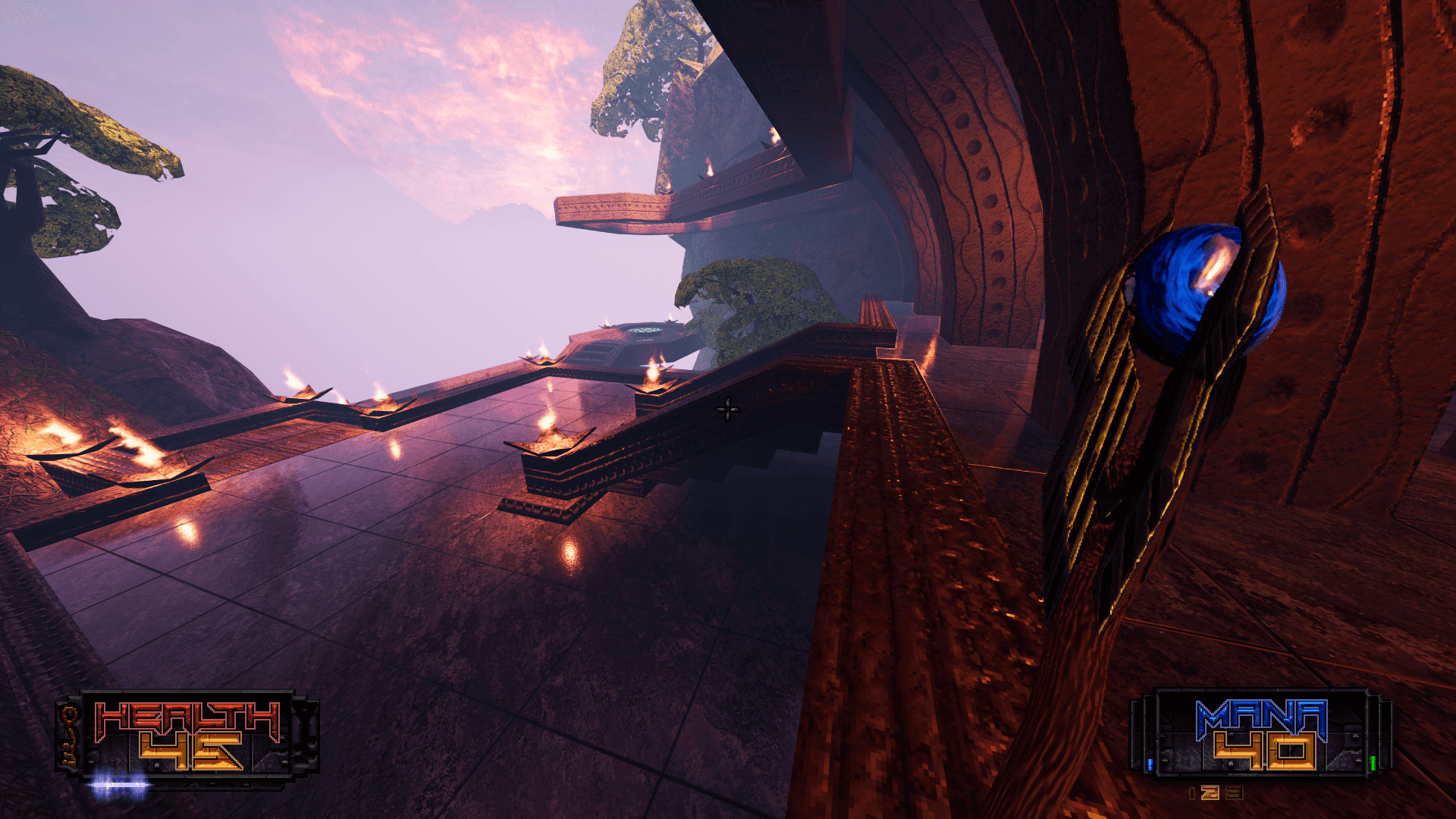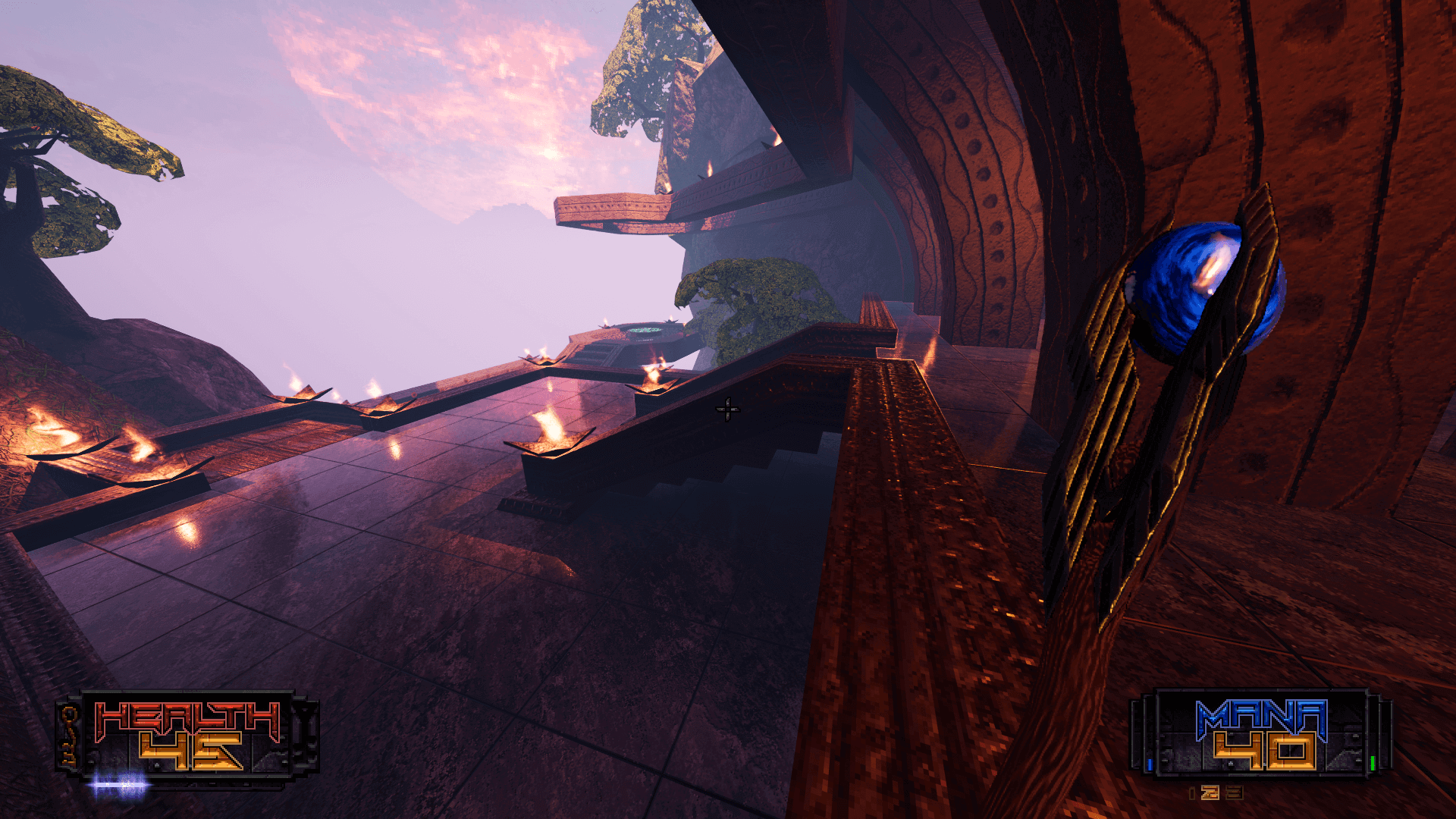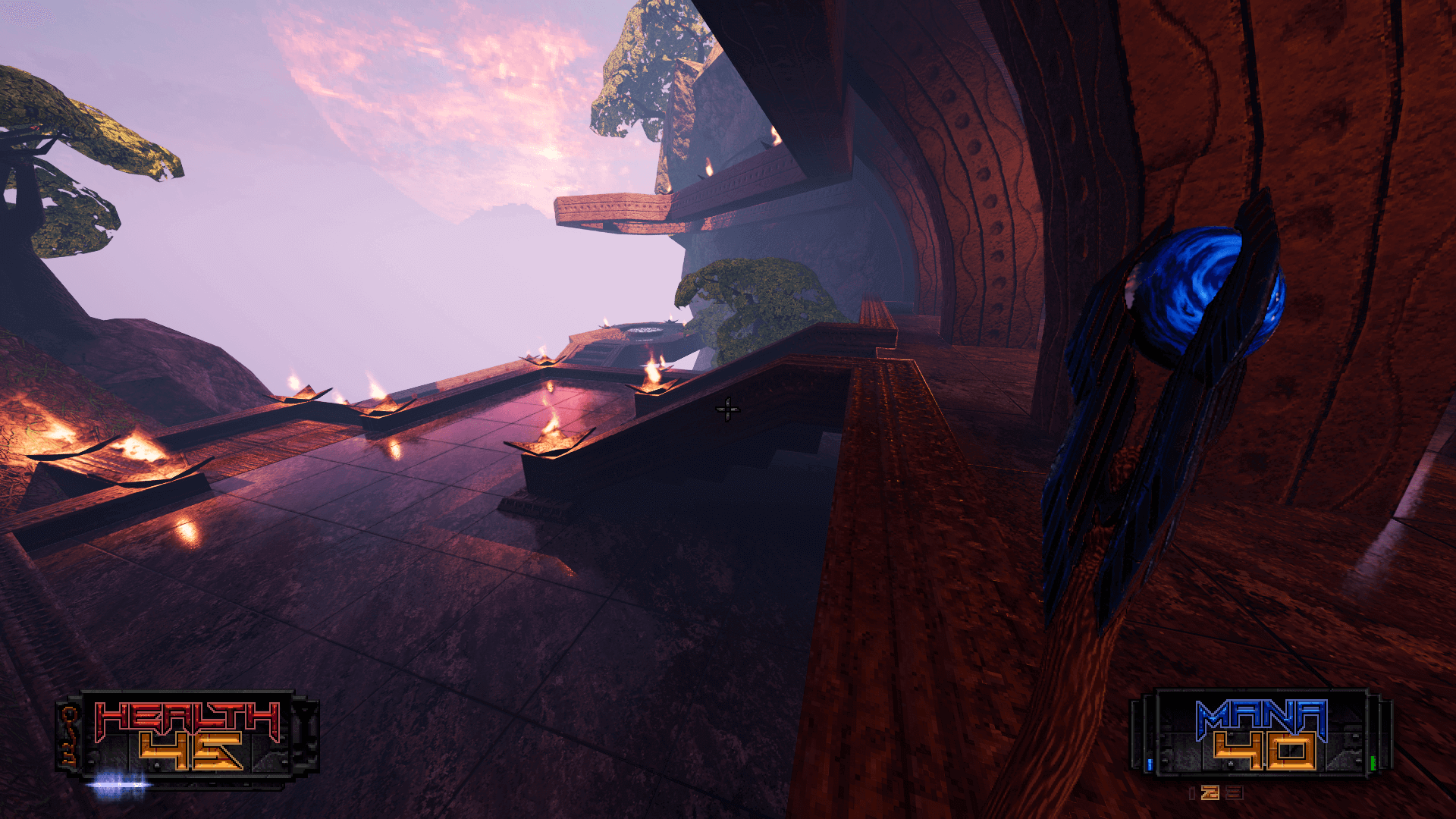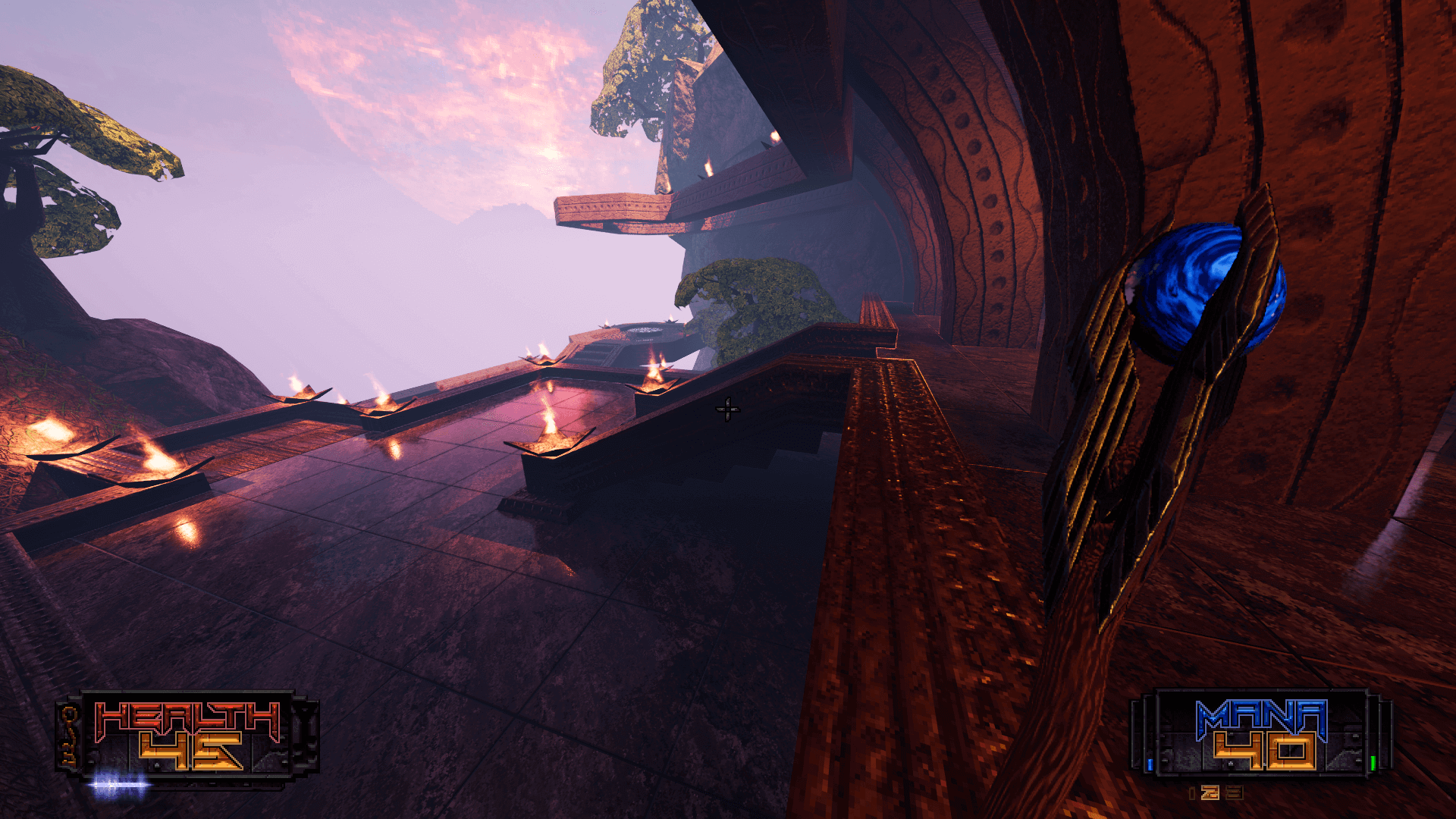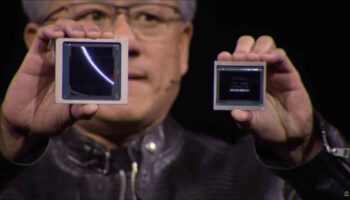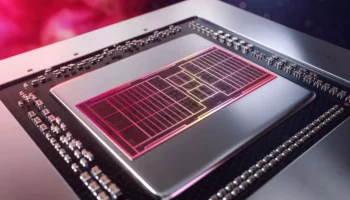If you’re a fan of games like Doom and Quake, then you most certainly should have heard of this indie gem called Amid Evil. Originally released in 2019, the game got a patch enabling ray-tracing a while back. Unlike Quake RTX, it comes with standard ray-tracing rather than path-tracing which tends to be much more performance hungry. It features both ray-traced shadows and reflections, and in addition reflection/shadow boost which essentially increases the number of reflection/shadow-casting objects in the scene. (Ambien) In this post, we have a look at these four features, plus the DLSS 2.0 implementation and how it compares to Unreal’s in-engine TAA.
AMID EVIL Ray Tracing: Shadows and Reflections
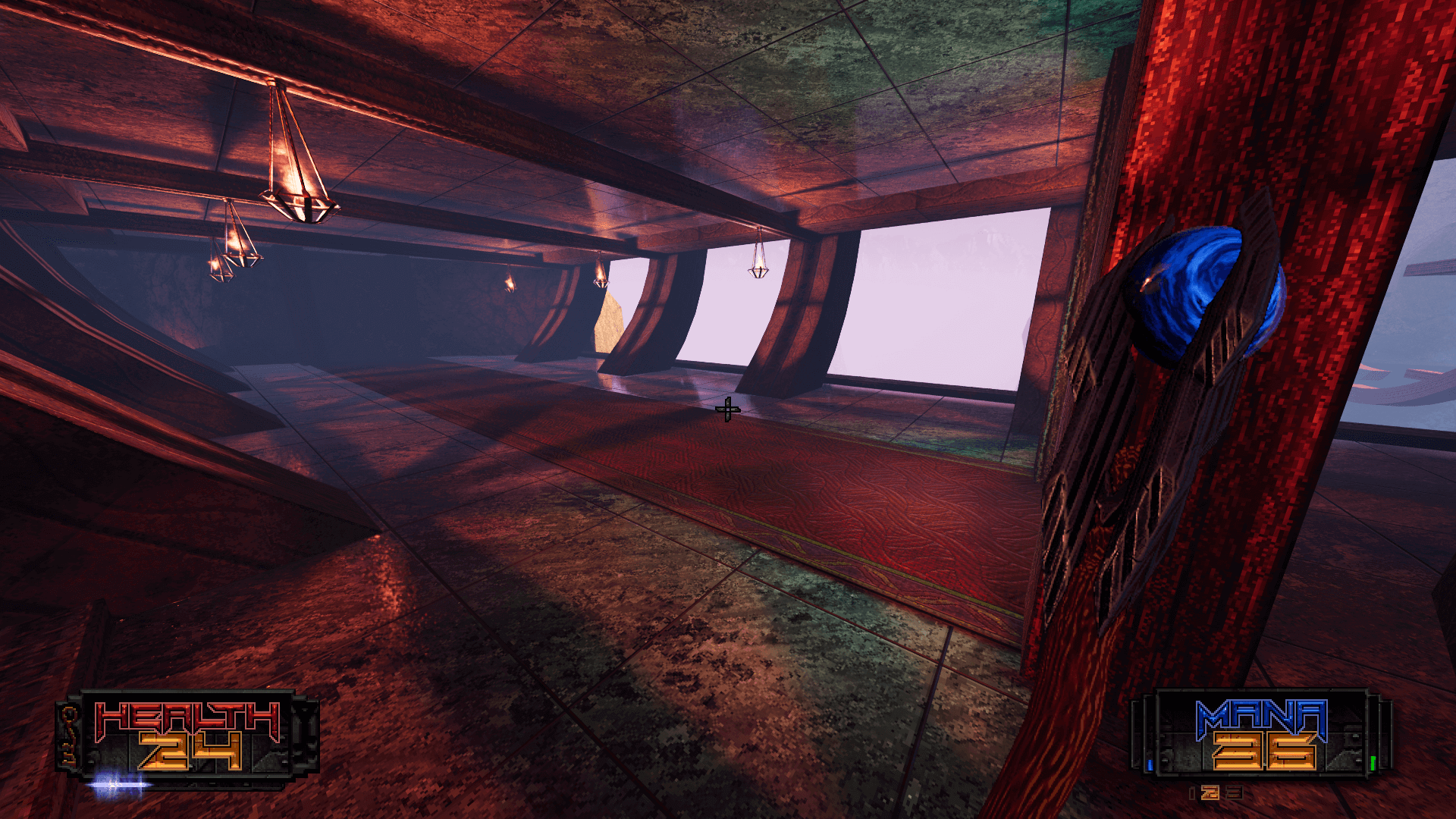
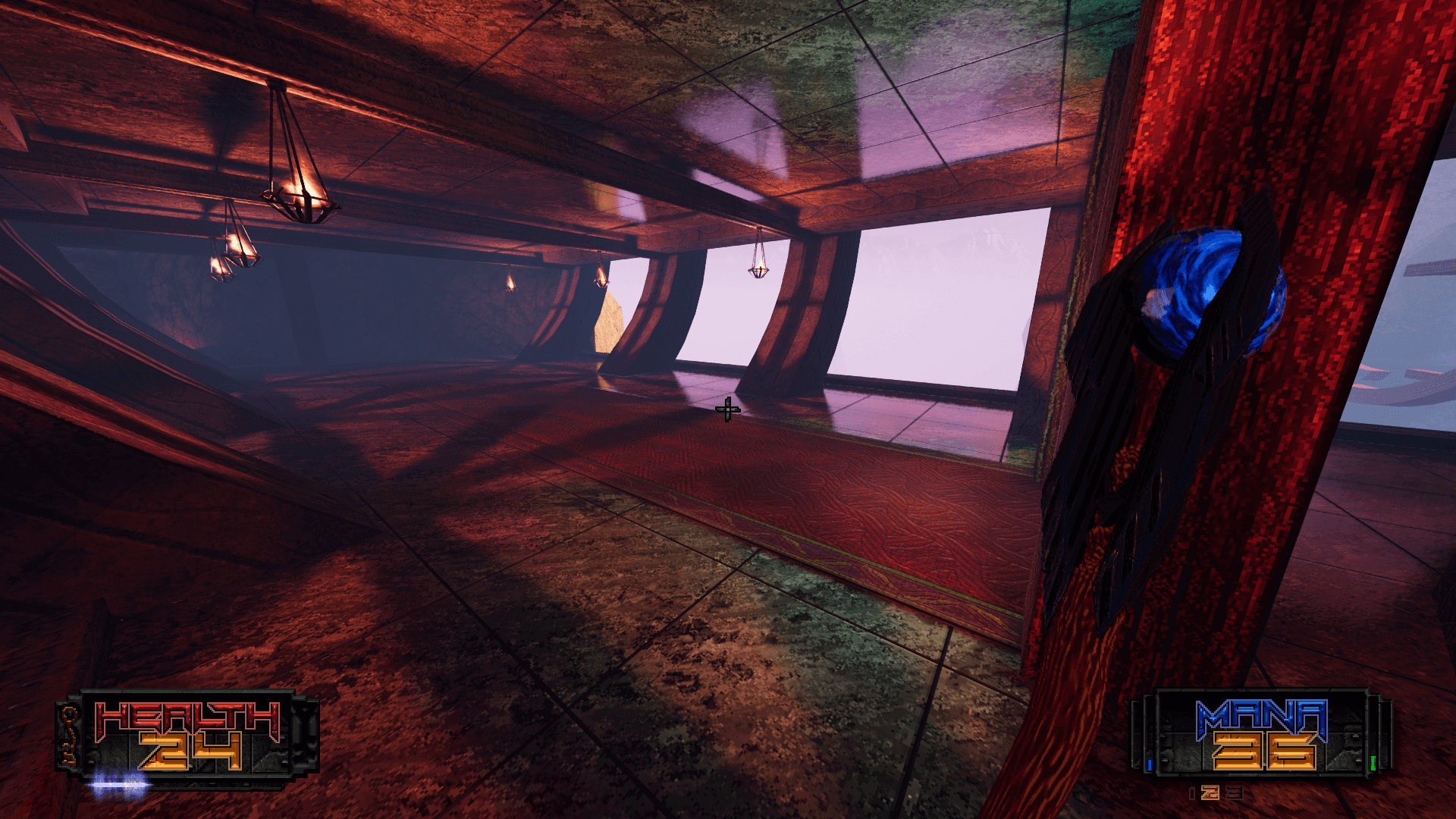
The above image is a good representation of how ray-tracing breathes new life into the game. Ray-traced reflections are easily noticeable with the pillars casting them on both the floor and the ceiling (upper right section of the image). The shadows are more subtle, primarily being cast on the lamp holders as the rails block the light, resulting in strong shadows on the outer surface. In this particular example, the impact of ray-traced shadows is fairly limited. It’s worth noting that ray-tracing is used for shadows only in the case of artificial light sources, and not for natural light.
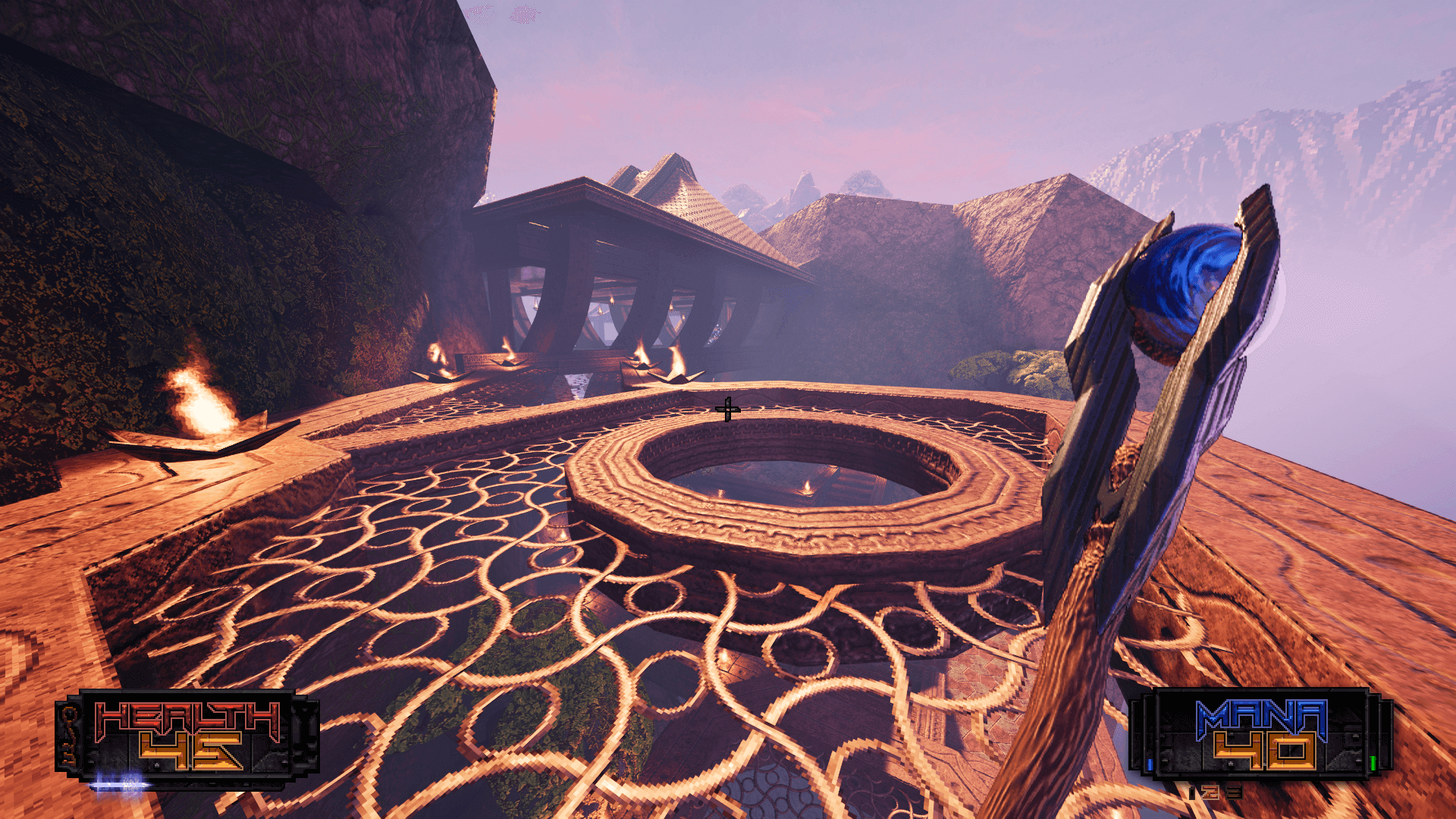
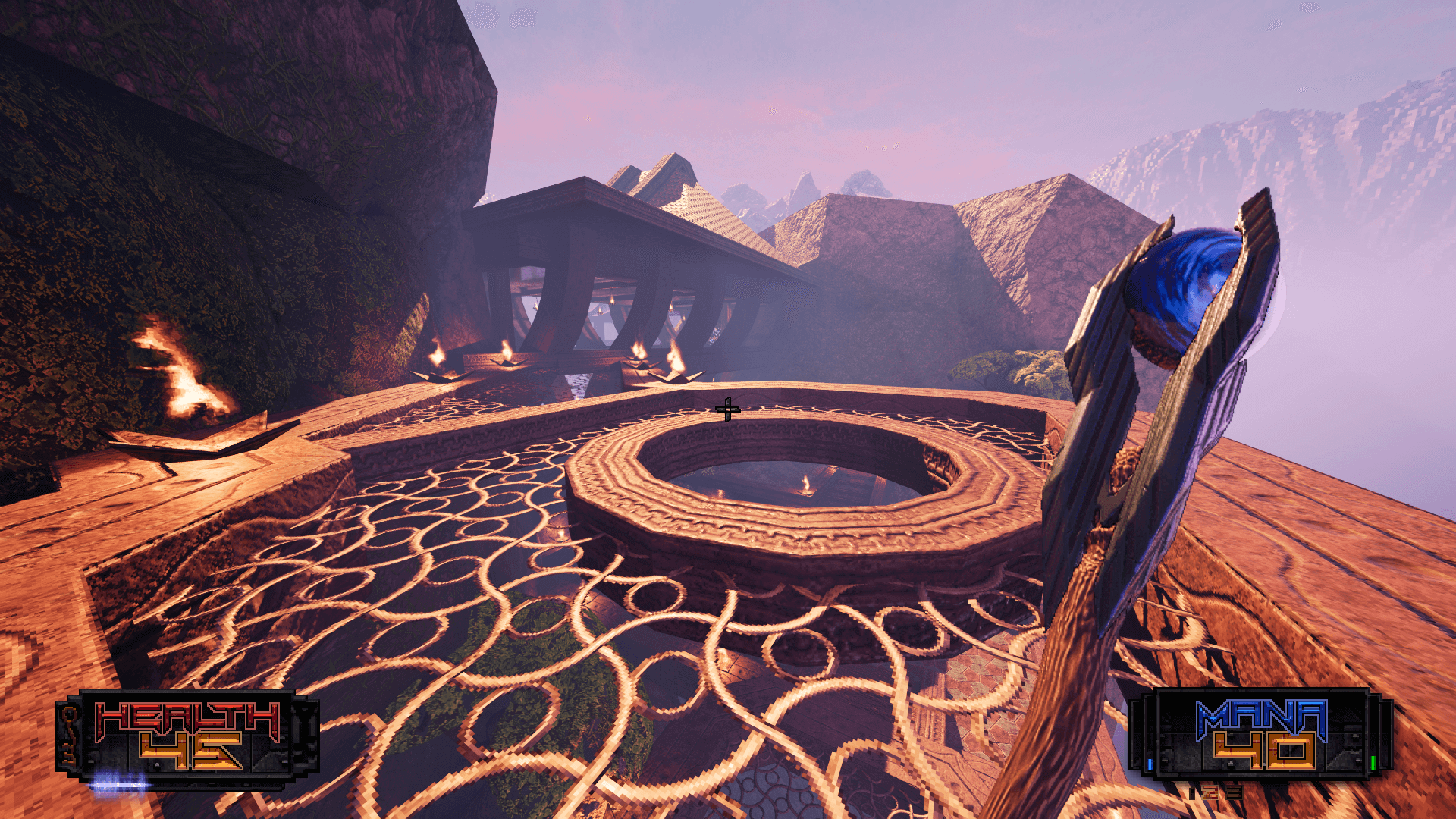
The above comparison better demonstrates ray-traced shadows. Although the overall impact is still fairly limited, the shadows are much sharper with ray-tracing enabled and thin/smaller objects cast more accurate and detailed shadows (such as the pattern on the ground). Normally, shadows are somewhat softer but in this case, they are pretty sharp here due to the brute-force approach.
In the above gallery, you can see how the ray-traced shadows and reflections affect the scene, both individually and together. An interesting thing to note here is that in the absence of shadows, certain reflections are less visible as they’re hidden in the additional light. Adding shadows makes the reflections more prominent in some cases. As for reflection boost, it essentially increases the threshold (reduces roughness) that determines which surfaces are reflective (glossy), therefore increasing the overall area of surfaces capable of reflecting. Shadow boost doesn’t do much. It’s supposed to increase the intensity of artificial lights that can cast shadows but I couldn’t find any substantial difference with or without it.
Here’s another excellent comparison of the visual impact of ray-tracing on the scene and the subtle interaction between shadows and reflections. The effect of “reflection boost” becomes clearer here. Most surfaces become slightly darker (even non-reflecting objects such as the staff and the nearby ledge), making the reflections clearer.
You can find the original uncompressed shots here.
DLSS vs TAA and Lighting Bugs
Continued on the next page…
